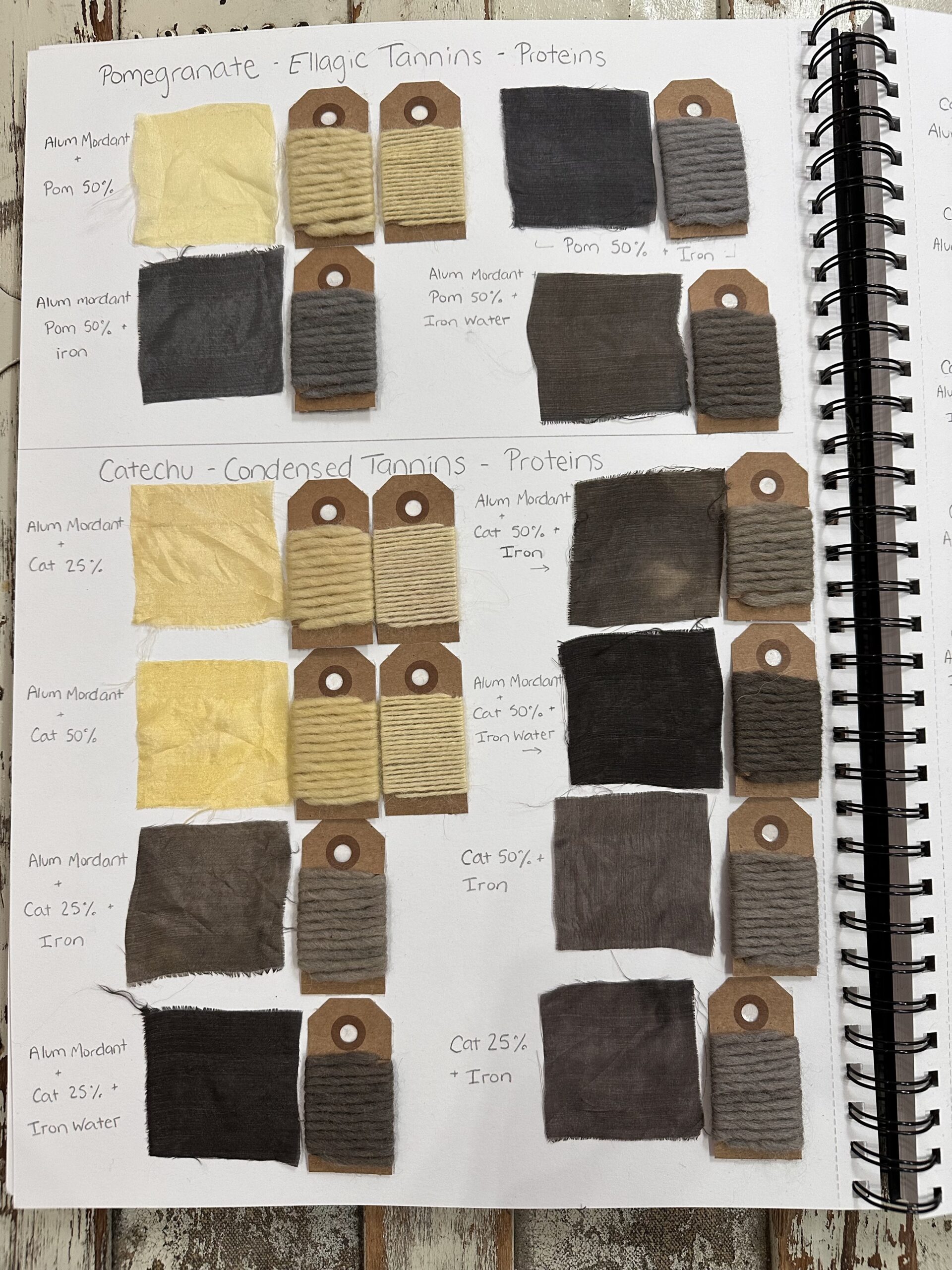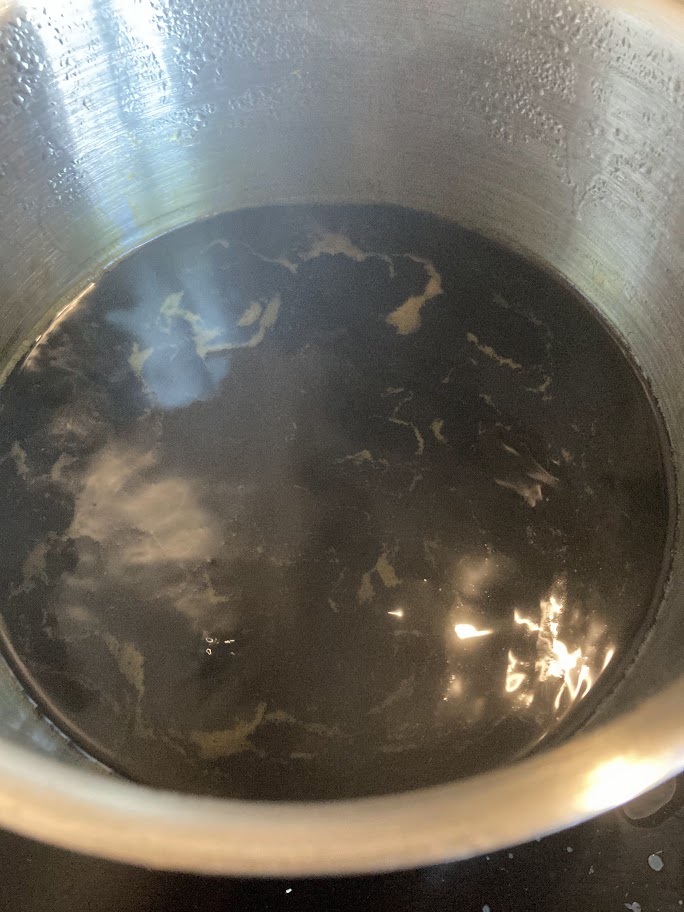Going to be honest with you, this is just a list of things I’ve found useful and is in no way complete. I’ve been doing this for a little while now and a lot of the stuff I’ve picked up as donations or second hand. I got very lucky and picked up chemistry flasks in a charity shop for a euro each, they’re great for having a look at dyebath liquids and giving them a mad scientist swirl.
Important Note: Any dye equipment should be dedicated thereafter as dye equipment and not be used for cooking ever again. While lots of dye related things are not problematic, it’s an extremely bad practice to mix food preparation with any other sort of material preparation. Many dyestuffs are irritant, poisonous, metallic or in other ways very problematic. Make things easy for yourself and just keep them apart.
- A variety of glass jars of different sizes, from small up to 2 or 3 litres. A couple of bigger ones with lids are very handy. I have a large, tall 3 litre clipped lid glass jar I use to cold soak oak galls for tannins. I aspire to a whole shelf of cold soaking dyestuffs in jars in my near-ish future. Some small jars with excellent lids for storing your dyestuff. Cork lids aren’t really enough.
- glass measuring jug(s) – if you can use different ones for different jobs great, but again that’s up to space, finances and how much you need to be free of possible contamination. I use a series of chemistry lab beakers in sizes from 100ml to 1 litre as well, but that was just because I had them from other pigment projects.
- Steel or Plastic sieves – you don’t want a colour you’re really pleased with getting messed up by strange effects from your utensils. It’s a good idea to have one for each colour group IF you have the space. Not always possible. DO NOT USE FOR FOOD.
- Wooden spoons and a tongs – these are pretty cheap and you’ll be glad you have different ones for different colours/jobs. DO NOT USE FOR FOOD.
- Buckets, a tin bath, big pots. Preferably non reactive, but it really depends on your budget, space and how much you care about the material possibly influencing your final result. Use only for dyes if you can.
- I have a couple of mortar and pestles, I pick them up from various places, Flying Tiger usually has little ones that are handy. DO NOT USE FOR FOOD.
- A way to measure PH – I use strips but if you do this in any way more seriously than I do you need an electronic PH meter. On top of everything else dyestuff has, by its very nature, colour, which makes using PH strips awkward.
- Pots, of useful size to dye in and whatever you can store/afford. Again the more nonreactive you can manage the better, but needs must sometimes.
- A face mask. Especially if handling Hydros (indigo dyeing) or any fine powders.
- Gloves. Undead smurf is not a good luck for hands. Ask me how I know.
- A digital scale. my ex-food one sucks, my micro scales is fantastic, but it’s lost in my “in-between-houses” packing.
- A good notebook! Remembering to actually write in it is another day’s work…
- something to take pictures with.
- A cooking liquid thermometer, DO NOT USE FOR FOOD.


Leave a Reply